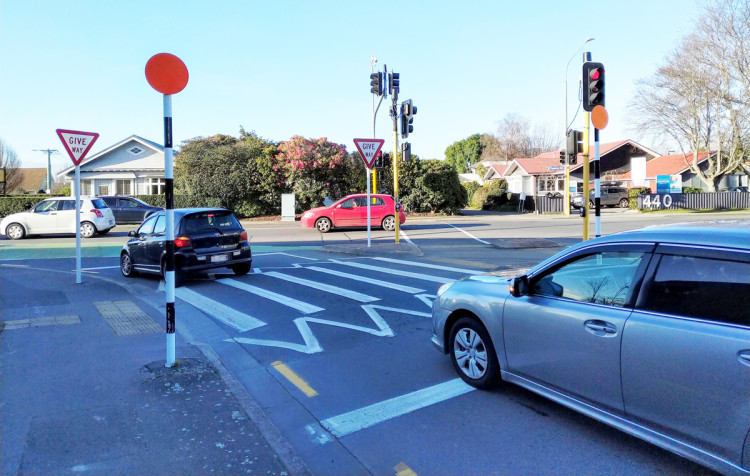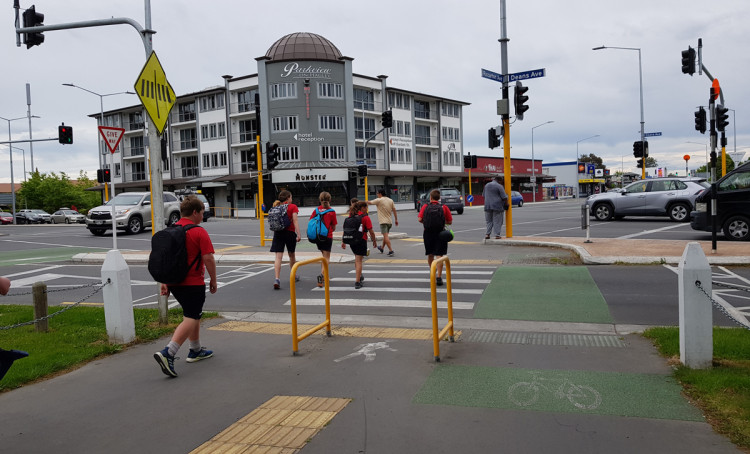A left turn slip lane is a lane separated from an adjacent lane by a marked or raised triangular island. Slip lanes can be used at priority controlled intersections, signalised intersections, roundabouts and grade separated intersections.
The most common type of slip lane island is located at signalised intersections to separate left turning traffic from through and/or right turning traffic. At signalised intersections slip lane islands separate diverging traffic and allow signal hardware to be located more conspicuously.

Raised zebra crossing on a left turn slip lane, Blighs Road, Christchurch. (Photo: Ben Jassin)
Slip lanes can be beneficial in terms of traffic safety and efficiency. However in central city and urban areas with high pedestrian volumes crossing the street, slip lanes should be avoided as they require pedestrians to cross another stream of traffic.
Outside of central areas, left turn slip lanes can manage heavy vehicle conflict well and increase intersection capacity and efficiency for all users. However, there are critical design factors to ensure that the slip lane aligns to best practice design and is comfortable for users including pedestrians. Practitioners should consider the operational benefits and risks of this treatment from a Safe System perspective. These critical factors include:
There are no specific legal considerations for slip lanes.
The slip lane should have a high entry angle to reduce traffic speeds.
Selecting an appropriate crossing facility type across the slip lane requires a context sensitive approach. The street environment considerations and crossing context table in the mid-block crossing selection process may assist in identifying an appropriate crossing type.
PNG: Crossing selection process
Specific considerations when choosing an appropriate crossing type in a slip lane context are described below:
On most intersections with a slip lane there will be three crossing places for pedestrians: Across the left turn slip lane, across the through and right turning traffic, and across the intersecting road. It is important in the design stage that any platform works with the adjoining waiting space in the island and beyond to the crossing of the traffic lanes so that the route is accessible by those in wheelchairs or using mobility devices.
Where a slip lane island also functions as a place for pedestrians to wait while crossing the road, tactile indicators should be provided as in the photo below. The size of the island must be able to accommodate the anticipated pedestrian demand and allow extra space for people using wheelchairs and pushchairs for example.

Slip lane with raised platform, tactile indicators and level surfaces through the islands. (Photo: Gemma Dioni)
On large slip lane islands that do not have a direct cut through, directional indicators should be used between the crossing points to provide directional guidance to pedestrians who are blind or have low vision.
Where there are three crossing points on a large slip lane island, directional indicators should lead to a central warning indicator with dimensions of 600 x 600mm to indicate that a choice becomes available.
A typical layout of a raised zebra crossing on a left turn slip lane is provided in Figure 14-2 of the TCD Manual Part 4. Note that the slip lane crossing could also be signalised.